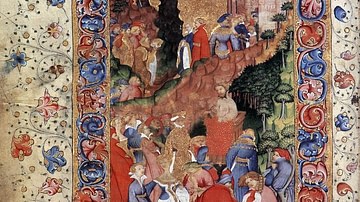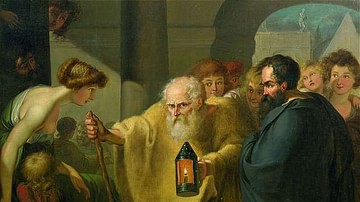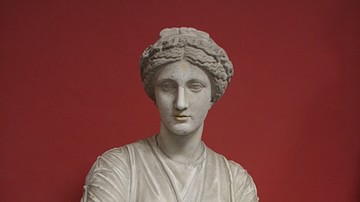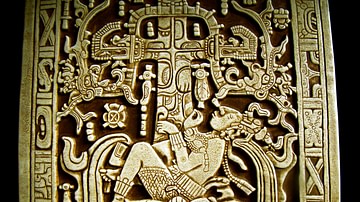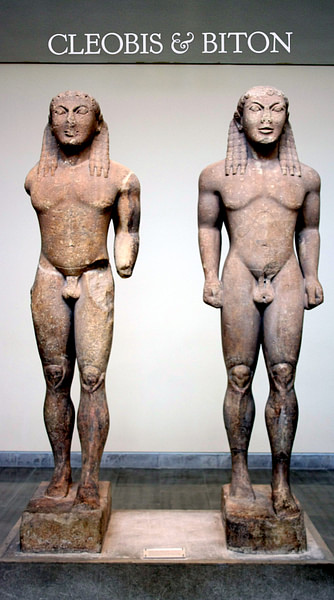
Two over-life-size Archaic kouroi (6.5 ft / 2 m) are housed at the Delphi Museum, and date to c. 580 BCE. Their names (Cleobis and Biton) are actually written on their bases, and the sculptor is given as Polymides of Argos: such inscriptions are unusual for this early date. They are ideal representations of strength and masculinity, in the Peloponnesian style.
The myth of Cleobis and Biton is told in Herodotus, 1.31. The two sons carried their priestess mother by cart in place of oxen. They travelled from Argos to the Argive Heraion, some 45 stadia.
At their arrival they collapse, and their mother prays to Hera that they may die in their sleep - the easiest death for mortals. Herodotus tells this story as part of Solon's answer to Croesus' questioning as to who the happiest man is.
μετὰ ταύτην δὲ τὴν εὐχὴν ὡς ἔθυσάν τε καὶ εὐωχήθησαν, ἐν αὐτῷ τῷ ἱρῷ οἱ νεηνίαι οὐκέτι ἀνέστησαν ἀλλ᾽ ἐν τέλεϊ τούτῳ ἔσχοντο. Ἀργεῖοι δὲ σφέων εἰκόνας ποιησάμενοι ἀνέθεσαν ἐς Δελφοὺς ὡς ἀριστῶν γενομένων.
After this prayer they sacrificed and feasted. The youths then lay down in the temple and went to sleep and never rose again; death held them there. The Argives made and dedicated at Delphi statues of them as being the best of men.
Herodotus, 1.31.5
(the full passage in translation and original can be found here)
Perhaps, in this case, there is some truth to Herodotus' stories…



